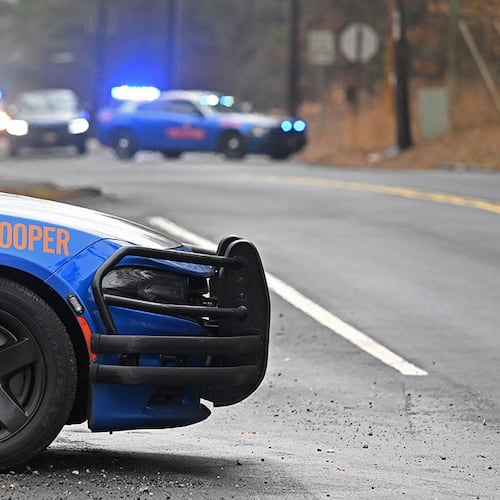The coronavirus pandemic has disrupted everything from commuting habits to supply chains. But there are still plenty of vehicles on metro Atlanta highways. And public officials are still trying to address traffic congestion.
Here’s a look at the top transportation stories affecting the region in 2021.
Infrastructure plan: Billions for Georgia
In November, President Joe Biden and Congress approved a $1.2 trillion infrastructure plan that includes $8.9 billion for road improvements in Georgia over five years, plus $225 million for bridge replacement and repairs. And that’s just the money distributed based on population and other factors. More could come through competitive grant programs.
Credit: Jcrawford@ajc.com
Credit: Jcrawford@ajc.com
Georgia would also receive nearly $1.4 billion over five years for public transportation – including $923 million for metro Atlanta – and another $619 million for airports.
State and local officials haven’t decided how to spend the money. They must wait for more details and find money to match the federal funds.
But there’s no shortage of highway and transit projects that need funding. Look for more details in the months ahead.
Pandemic affects roads and rails
COVID-19 continues to affect commuting.
More people are working from home. E-commerce has exploded, which means more delivery vehicles on the road. And after years of declining, traffic fatalities are up – public safety officials say less traffic and higher speeds on highways have made crashes more deadly.
Credit: JOHN SPINK / AJC
Credit: JOHN SPINK / AJC
Meanwhile, public transportation has been hit hard by the pandemic. Transit agencies are spending more on cleaning and equipment to protect passengers and employees. But passenger revenue has plummeted as fewer people ride.
Federal aid is bailing out local transit agencies. But service has been disrupted – MARTA has twice scaled back bus service during the pandemic.
Bottom line: We probably won’t know what the “new normal” for Atlanta traffic and transit looks like until after the pandemic.
Delays for major road work
Major construction on the new I-285 interchange at Ga. 400 began in 2017 and was supposed to be done last year. An expansion of the project pushed the timeline ahead to the end of 2021.
Credit: HYOSUB SHIN / AJC
Credit: HYOSUB SHIN / AJC
Then in August, the Georgia Department of Transportation announced that the new interchange won’t be done until the third quarter of 2022. The contractor cited bad weather, unmarked utilities and pandemic-related staffing and supply shortages.
GDOT also announced it rejected the lone qualifying proposal to build new toll lanes along Ga. 400 in Fulton and Forsyth counties. The cost was far more than the agency’s $1.7 billion budget for the project. Although no new timetable has been announced, restarting the procurement process will add another 12 to 18 months.
Transit expansion continues
Pandemic or not, metro Atlanta continues to plan for transit expansion.
In Atlanta, MARTA is moving forward with its Capitol Avenue/Summerhill bus rapid transit line. It’s also choosing between light rail and bus rapid transit for Campbellton Road. And it’s renovating Five Points and other transit stations.
MARTA also is studying light rail along the Atlanta Beltline. Some transit supporters worry the agency will back away from its longtime commitment to light rail on the loop.
In Clayton County, MARTA is already backing away from plans for commuter rail from the East Point station to Jonesboro and Lovejoy. It may build bus rapid transit along the route instead. MARTA is also moving forward with the Southlake bus rapid transit line in Clayton.
Meanwhile, some suburban counties are developing transit expansion plans. And several government agencies have agreed to study bus rapid transit along the top end of the Perimeter.
Georgia to put tolls in private hands
Georgia sets toll rates on metro Atlanta’s growing network of express lanes. But last summer, state officials announced they will let a private company set tolls on a 40-mile stretch of the Perimeter.
The firm would invest in the design, construction and maintenance of the new lanes, then collect toll revenue for 50 years.
GDOT says private funding would allow construction of two new toll lanes in each direction on the northern half of I-285.
The new plan also has potential risks. A private firm may charge higher tolls than the government would to earn a profit. And some companies that invested in U.S. toll roads have filed for bankruptcy because tolls didn’t produce as much revenue as projected.
State officials say such concerns can be addressed in the contract with the company selected.
It’s not clear how the new plan will affect the timeline for the project. The lanes had been set for construction in segments beginning in 2023.
About the Author
The Latest
Featured





